Abstract
1. Synovial fluid hydrostatic pressures were measured in normal knee (stifle) joints of anaesthetized rabbits using perforated cannulae. Pressures were subatmospheric in seventy out of seventy-two joints, with a mean value of -4.6 cm H2O (range 0 to -12 cm H2O) at joint angles of 120--150 degrees. 2. Similar values were obtained by a wick-in-needle technique (mean -4.0 cm H2O), which along with several other tests indicated that the subatmospheric values were not artifactual. 3. A slow rise in pressure of 1--2 cm H2O per hour in the motionless joint was attributed to a net filtration of fluid into the joint space. 4. Pressure increased as a curvilinear function of joint angle when the joint was flexed passively, the slope of the relationship depending on synovial fluid volume. Pressure also increased on active flexion of the joint, or on passively increasing the tension of soft peri-articular tissues. 5. Positive (above atmospheric) pressures in acutely flexed joints declined with time. Pressures declined less rapidly when synovial fluid was replaced by nonabsorbable paraffin oil. It was concluded that joint fluid can be absorbed by the synovium during acute flexion. 6. Processes which might generate subatmospheric pressures are discussed. The hypothesis is advanced that the flexion-dependent 'trans-synovial pump', possibly in series with a lymphatic pump, may account for the maintenance of a small synovial fluid volume and subatmospheric pressure in the face of a net filtration of fluid from synovial capillaries into the joint space.
Full text
PDF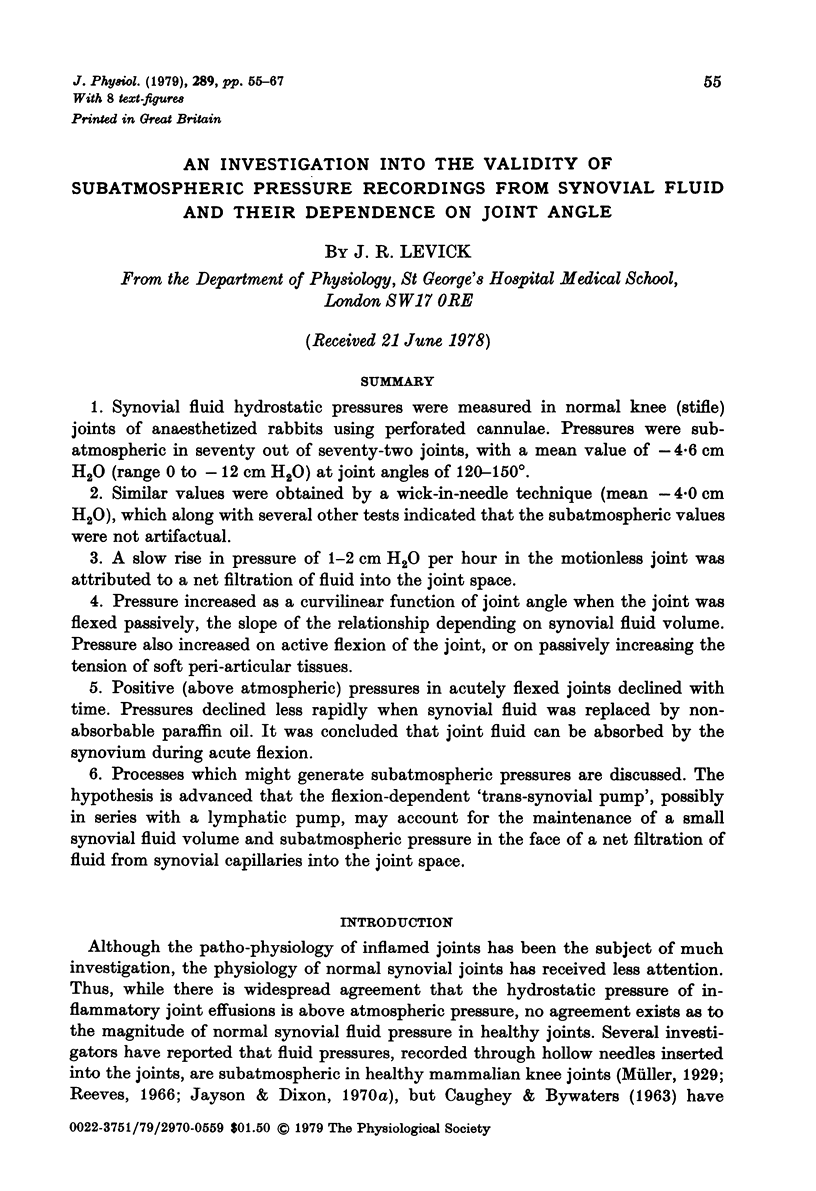
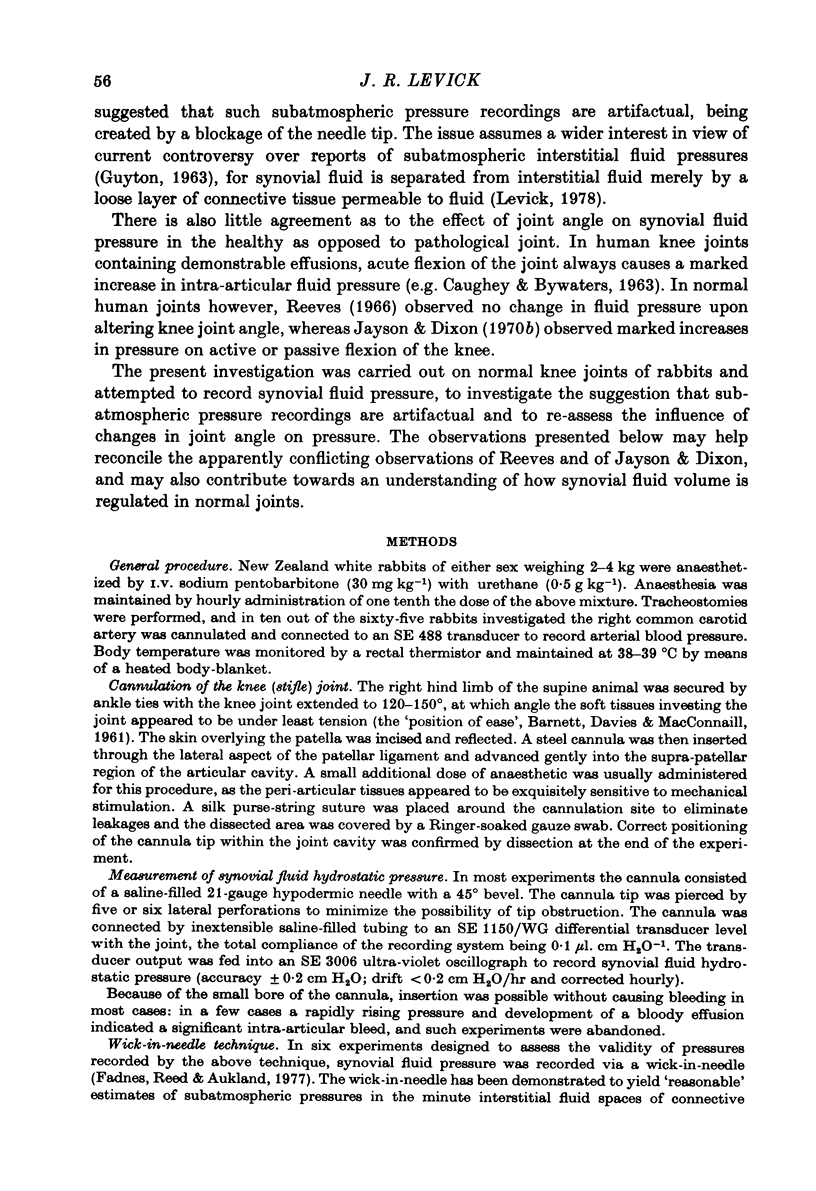
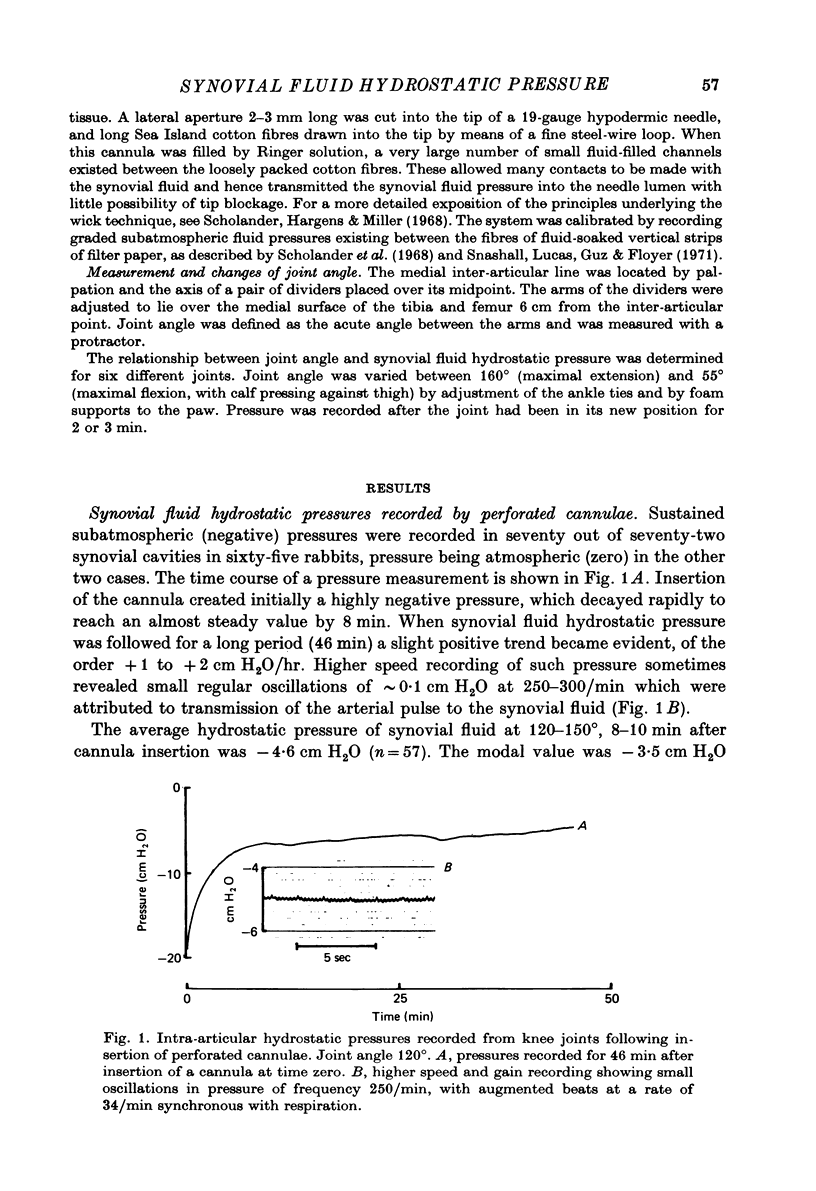
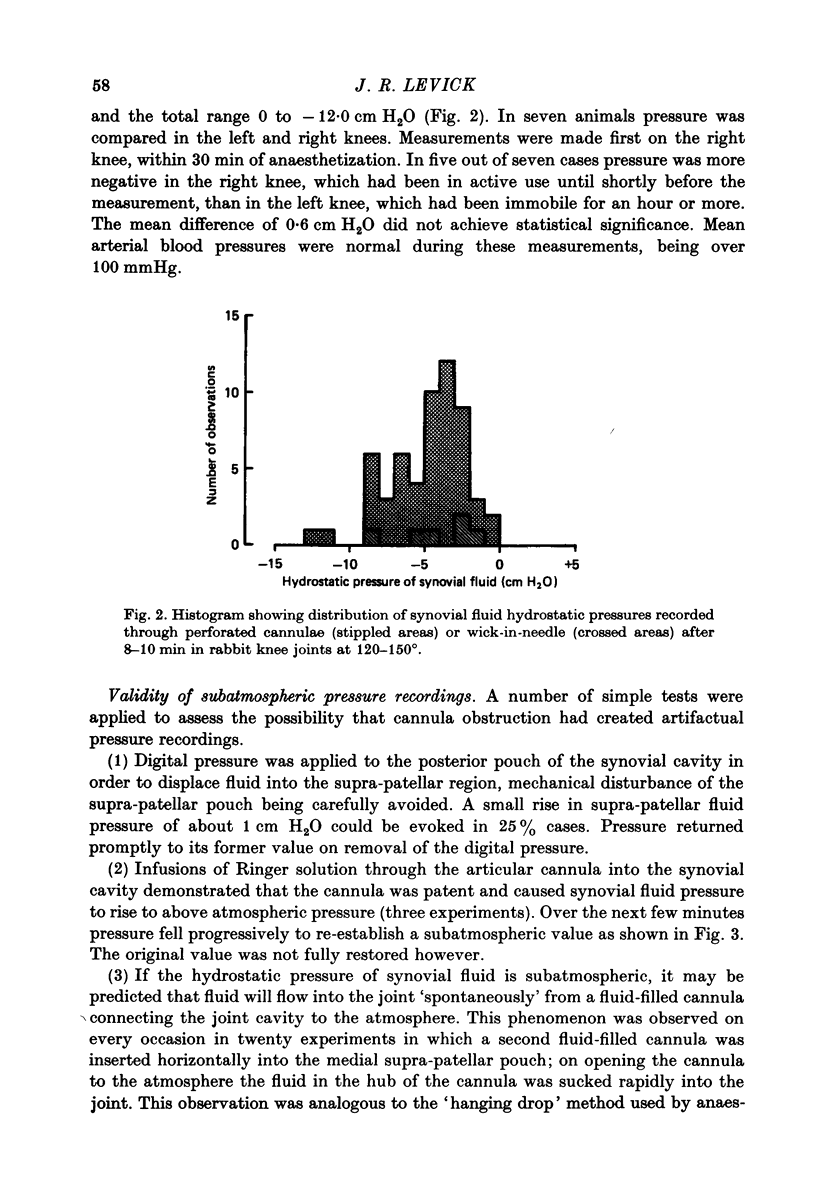
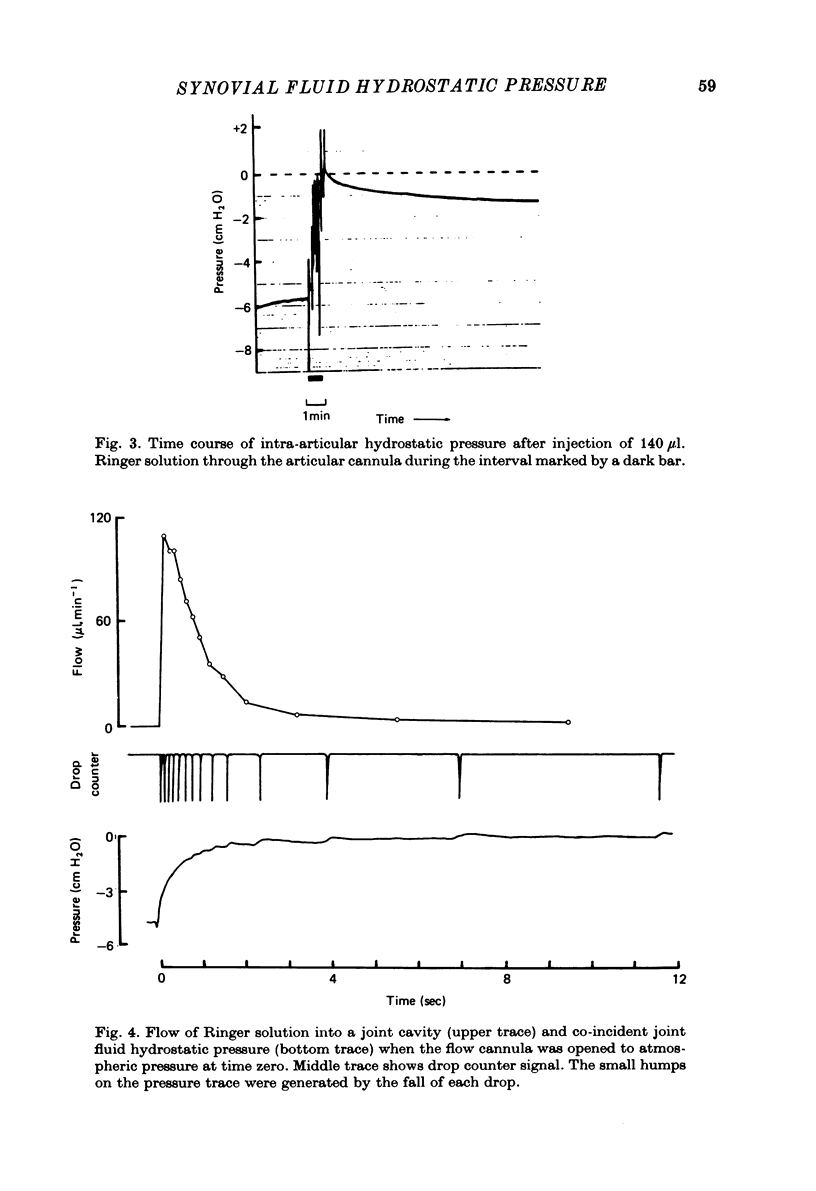
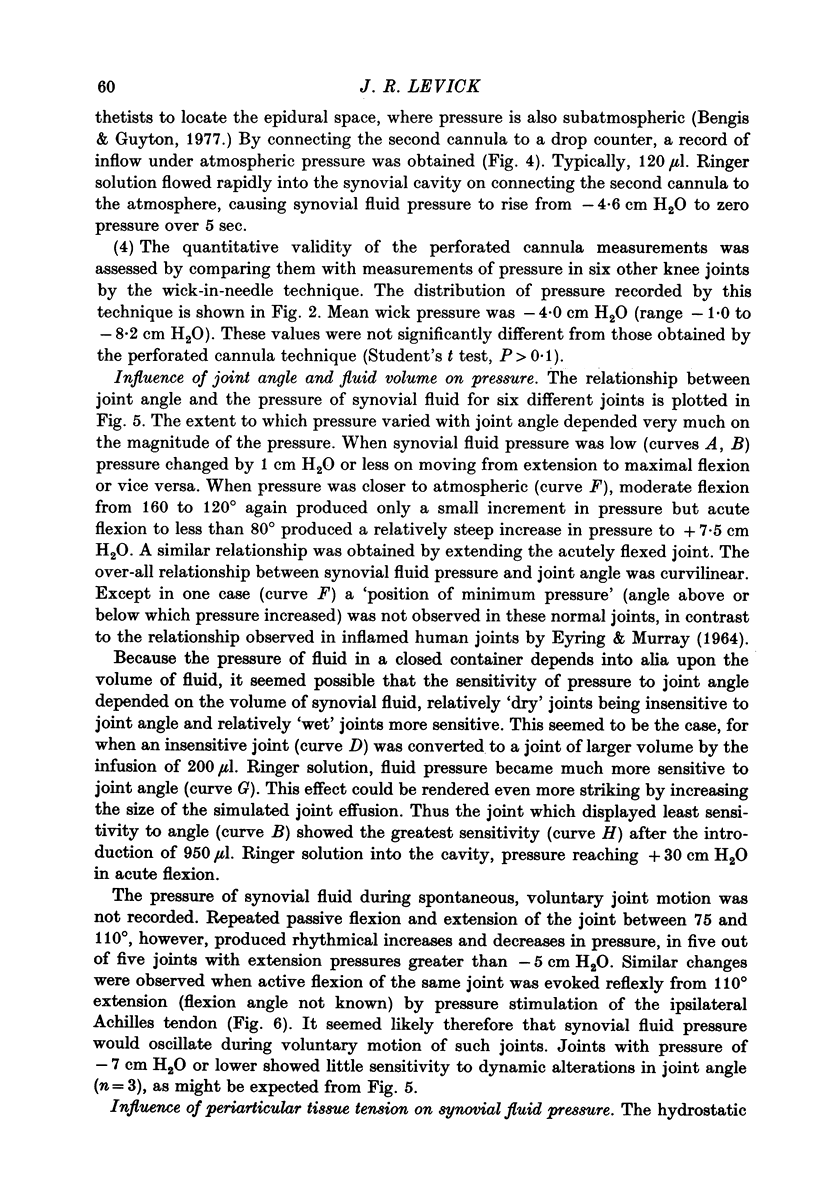
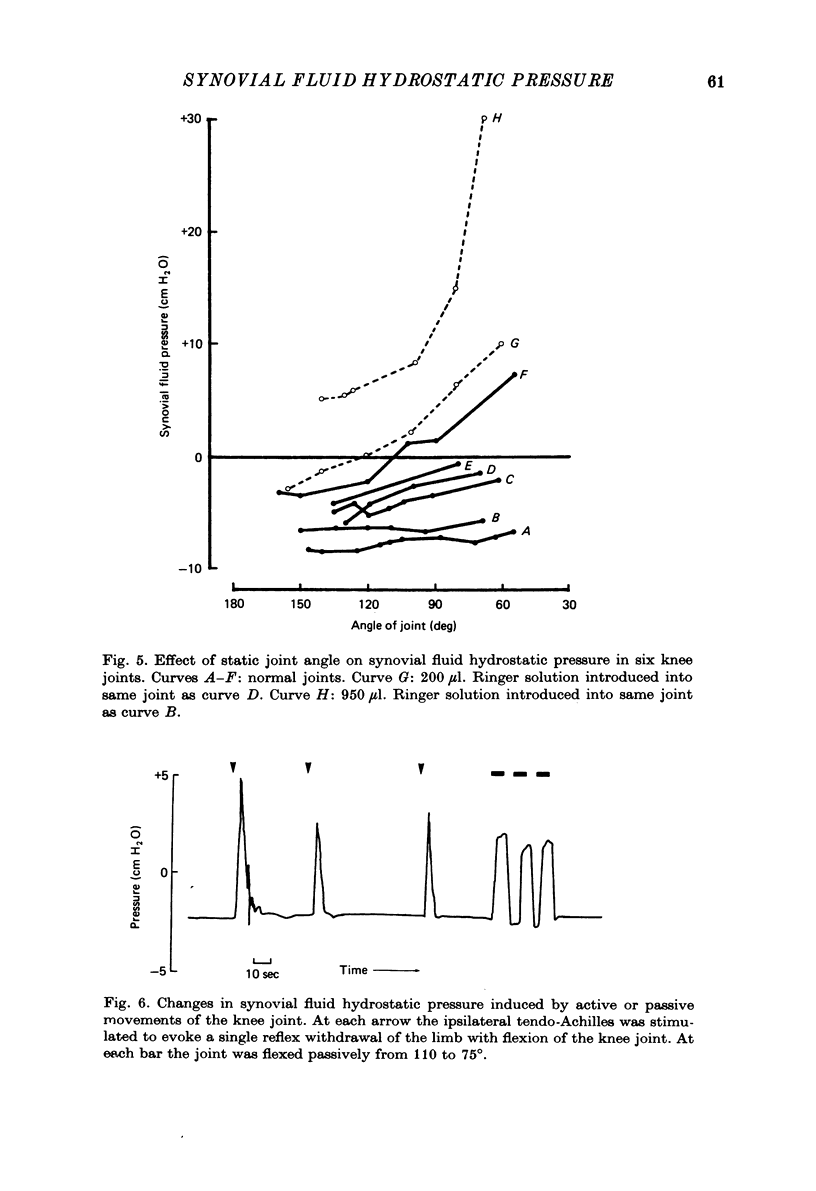
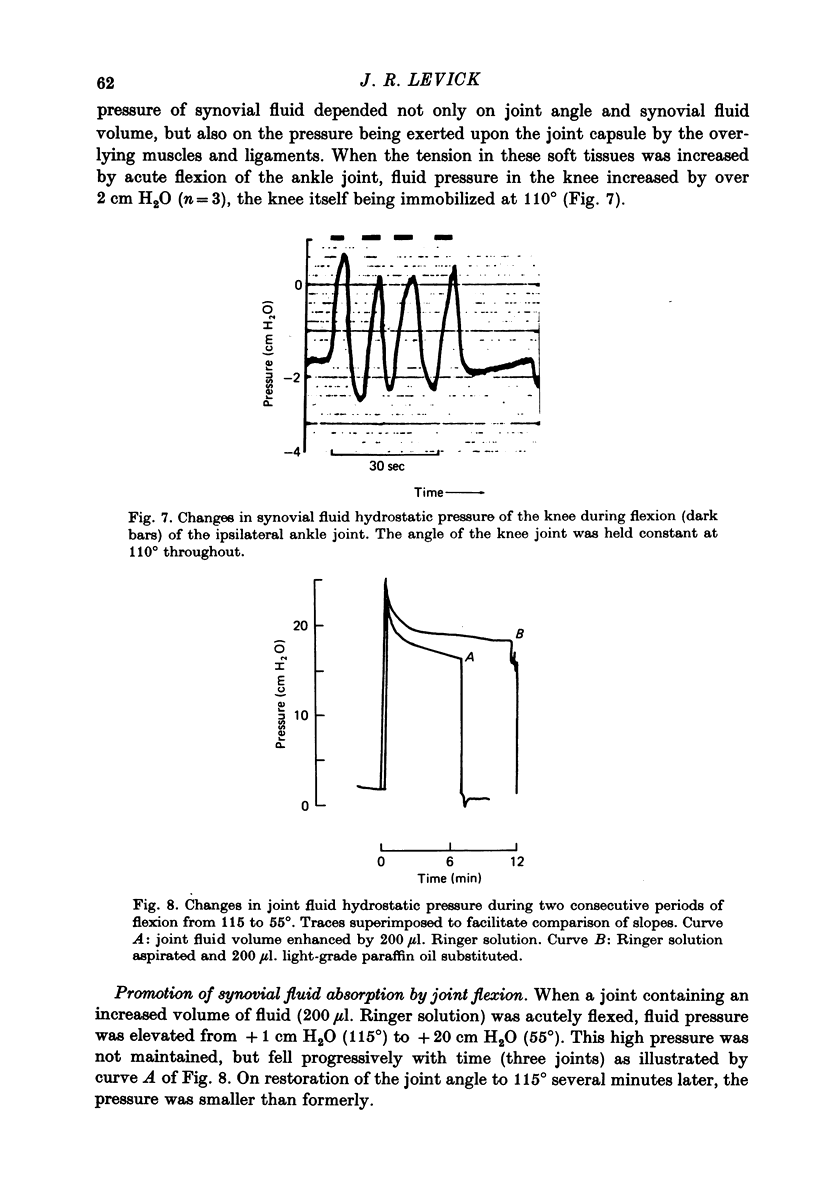
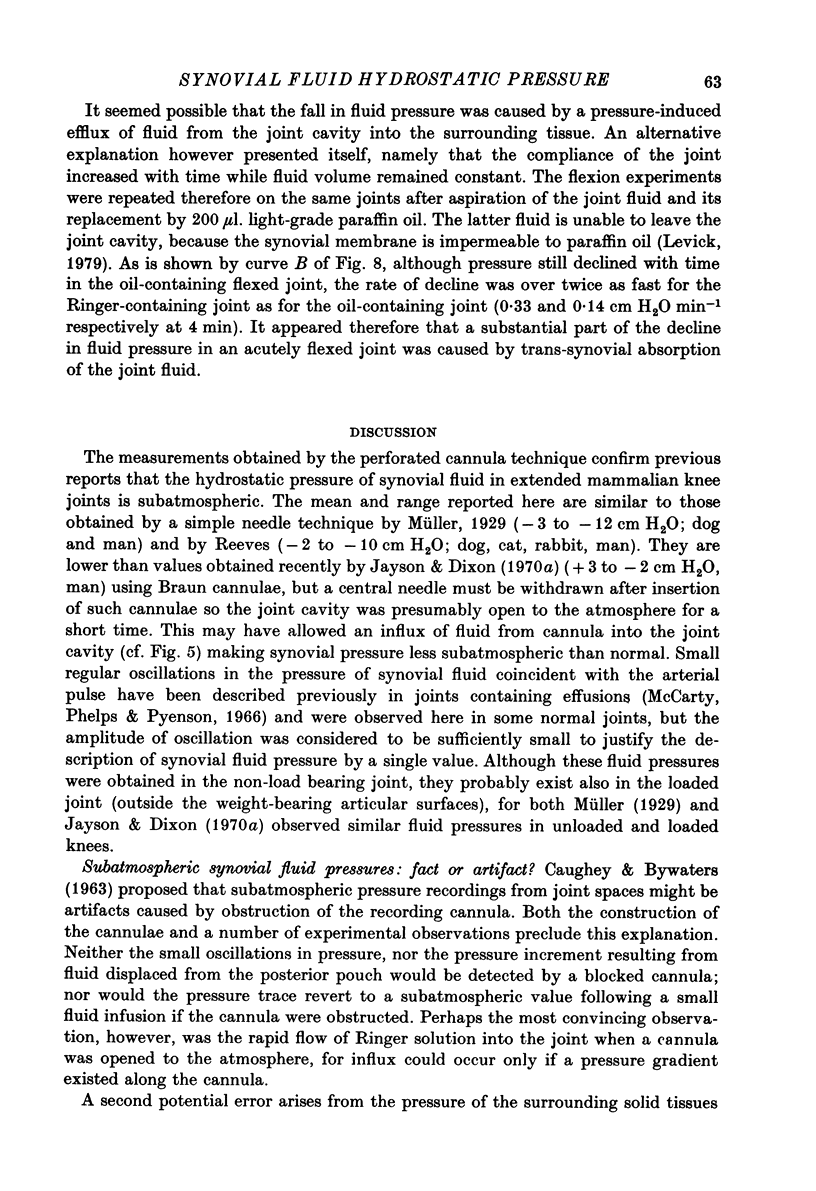
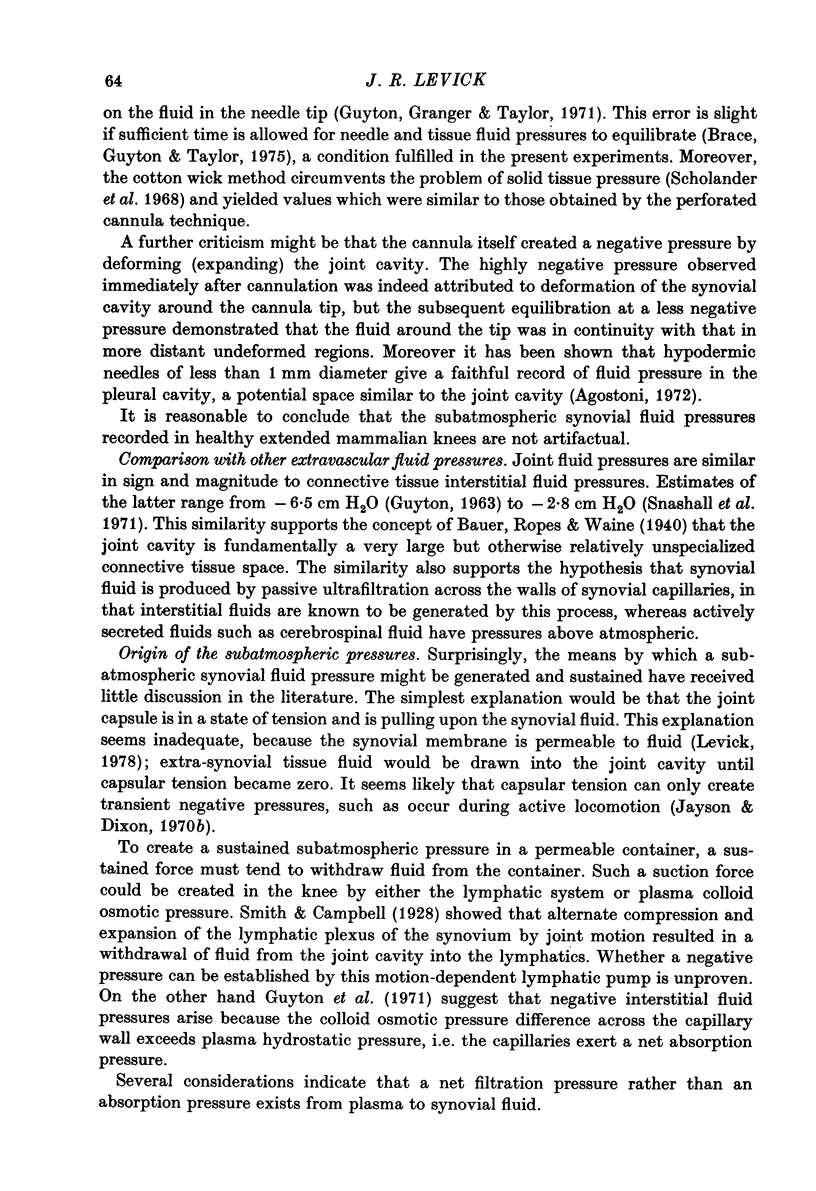
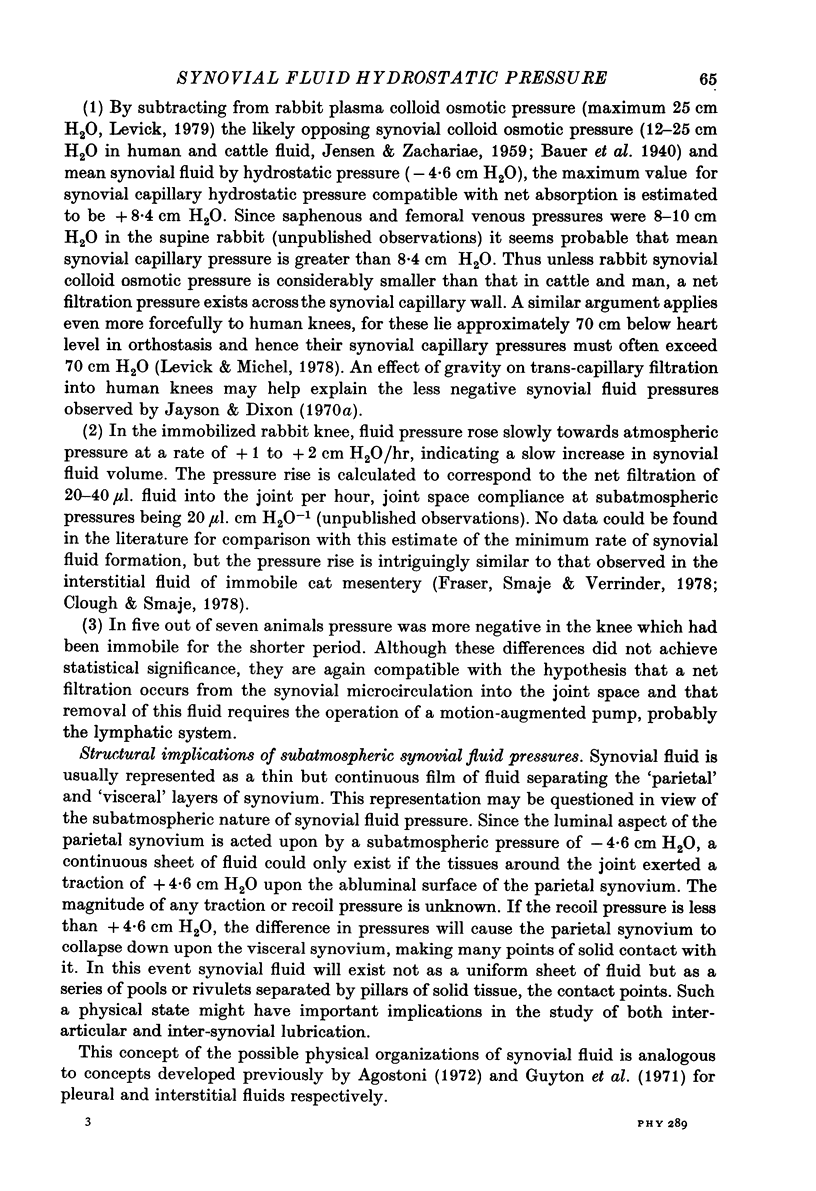
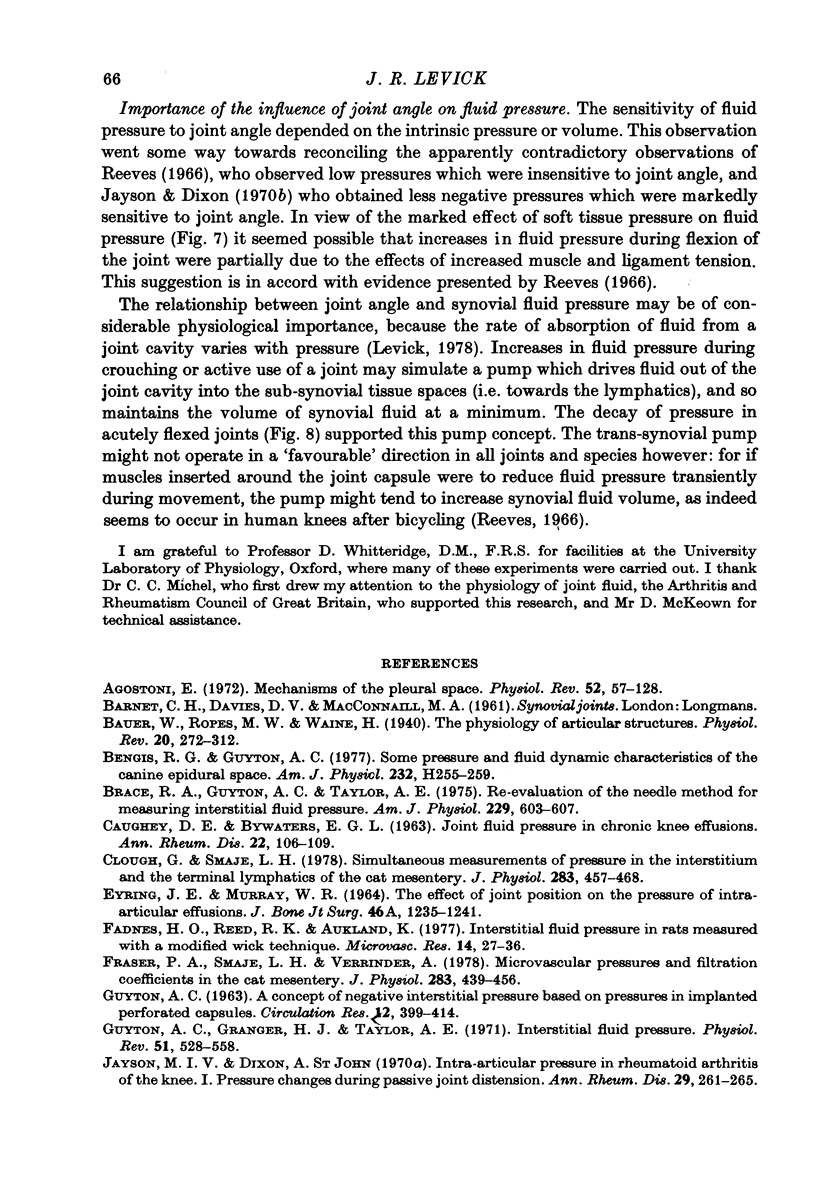
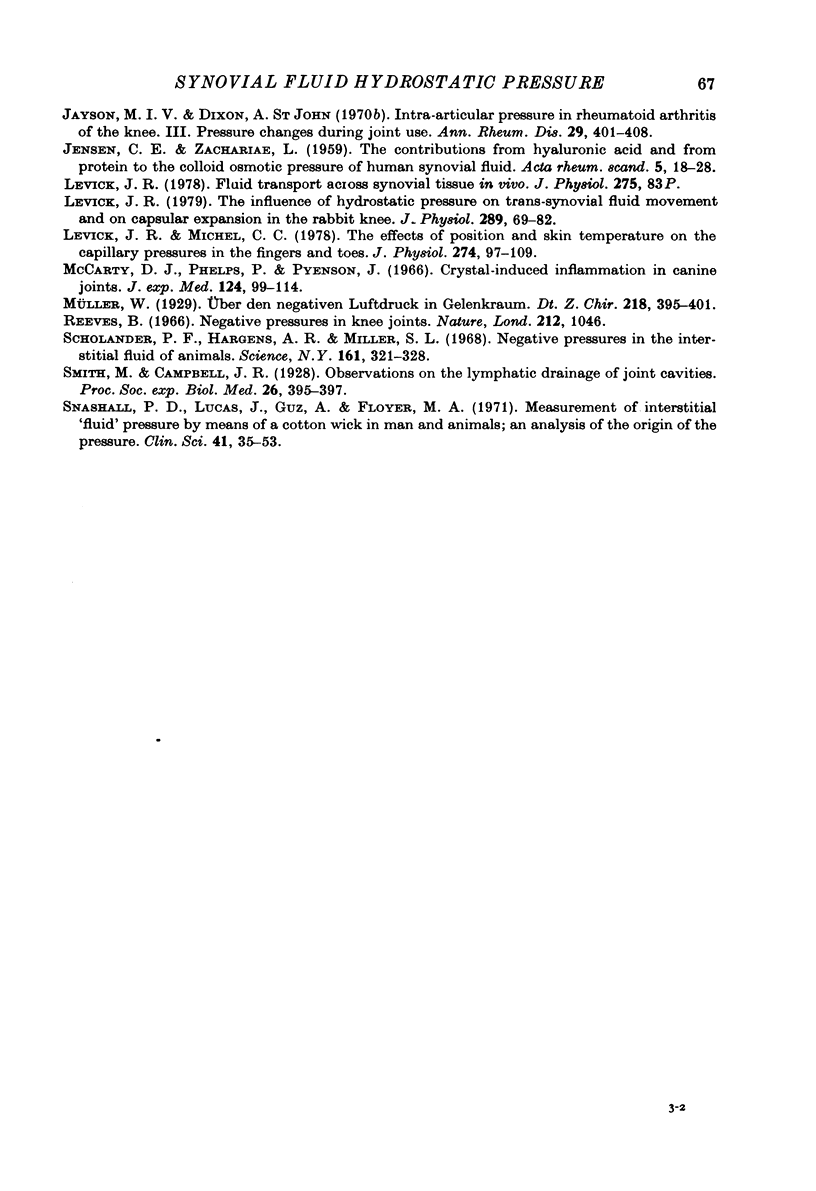
Selected References
These references are in PubMed. This may not be the complete list of references from this article.
- Agostoni E. Mechanics of the pleural space. Physiol Rev. 1972 Jan;52(1):57–128. doi: 10.1152/physrev.1972.52.1.57. [DOI] [PubMed] [Google Scholar]
- Bengis R. G., Guyton A. C. Some pressure and fluid dynamic characteristics of the canine epidural space. Am J Physiol. 1977 Mar;232(3):H255–H259. doi: 10.1152/ajpheart.1977.232.3.H255. [DOI] [PubMed] [Google Scholar]
- Brace R. A., Guyton A. C., Taylor A. E. Reevaluation of the needle method for measuring interstitial fluid pressure. Am J Physiol. 1975 Sep;229(3):603–607. doi: 10.1152/ajplegacy.1975.229.3.603. [DOI] [PubMed] [Google Scholar]
- CAUGHEY D. E., BYWATERS E. G. Joint fluid pressure in chronic knee effusions. Ann Rheum Dis. 1963 Mar;22:106–109. doi: 10.1136/ard.22.2.106. [DOI] [PMC free article] [PubMed] [Google Scholar]
- Clough G., Smaje L. H. Simultaneous measurement of pressure in the interstitium and the terminal lymphatics of the cat mesentery. J Physiol. 1978 Oct;283:457–468. doi: 10.1113/jphysiol.1978.sp012512. [DOI] [PMC free article] [PubMed] [Google Scholar]
- EYRING E. J., MURRAY W. R. THE EFFECT OF JOINT POSITION ON THE PRESSURE OF INTRA-ARTICULAR EFFUSION. J Bone Joint Surg Am. 1964 Sep;46:1235–1241. [PubMed] [Google Scholar]
- Fadnes H. O., Reed R. K., Aukland K. Interstitial fluid pressure in rats measured with a modified wick technique. Microvasc Res. 1977 Jul;14(1):27–36. doi: 10.1016/0026-2862(77)90138-8. [DOI] [PubMed] [Google Scholar]
- Fraser P. A., Smaje L. H., Verrinder A. Microvascular pressures and filtration coefficients in the cat mesentery. J Physiol. 1978 Oct;283:439–456. doi: 10.1113/jphysiol.1978.sp012511. [DOI] [PMC free article] [PubMed] [Google Scholar]
- JENSEN C. E., ZACHARIAE L. The contributions from hyaluronic acid and from protein to the colloid osmotic pressure of human synovial fluid. Acta Rheumatol Scand. 1959;5(1):18–28. [PubMed] [Google Scholar]
- Jayson M. I., Dixon A. S. Intra-articular pressure in rheumatoid arthritis of the knee. 3. Pressure changes during joint use. Ann Rheum Dis. 1970 Jul;29(4):401–408. doi: 10.1136/ard.29.4.401. [DOI] [PMC free article] [PubMed] [Google Scholar]
- Jayson M. I., St Dixon A. J. Intra-articular pressure in rheumatoid arthritis of the knee. I. Pressure changes during passive joint distension. Ann Rheum Dis. 1970 May;29(3):261–265. doi: 10.1136/ard.29.3.261. [DOI] [PMC free article] [PubMed] [Google Scholar]
- Levick J. R. Fluid transport across synovial tissue in vivo [proceedings]. J Physiol. 1978 Feb;275:83P–83P. [PubMed] [Google Scholar]
- Levick J. R., Michel C. C. The effects of position and skin temperature on the capillary pressures in the fingers and toes. J Physiol. 1978 Jan;274:97–109. doi: 10.1113/jphysiol.1978.sp012136. [DOI] [PMC free article] [PubMed] [Google Scholar]
- Levick J. R. The influence of hydrostatic pressure on trans-synovial fluid movement and on capsular expansion in the rabbit knee. J Physiol. 1979 Apr;289:69–82. doi: 10.1113/jphysiol.1979.sp012725. [DOI] [PMC free article] [PubMed] [Google Scholar]
- McCarty D. J., Jr, Phelps P., Pyenson J. Crystal-induced inflammation in canine joints. I. An experimental model with quantification of the host response. J Exp Med. 1966 Jul 1;124(1):99–114. doi: 10.1084/jem.124.1.99. [DOI] [PMC free article] [PubMed] [Google Scholar]
- Scholander P. F., Hargens A. R., Miller S. L. Negative pressure in the interstitial fluid of animals. Fluid tensions are spectacular in plants; in animals they are elusively small, but just as vital. Science. 1968 Jul 26;161(3839):321–328. doi: 10.1126/science.161.3839.321. [DOI] [PubMed] [Google Scholar]
- Snashall P. D., Lucas J., Guz A., Floyer M. A. Measurement of interstitial 'fluid' pressure by means of a cotton wick in man and animals: an analysis of the origin of the pressure. Clin Sci. 1971 Jul;41(1):35–53. doi: 10.1042/cs0410035. [DOI] [PubMed] [Google Scholar]


